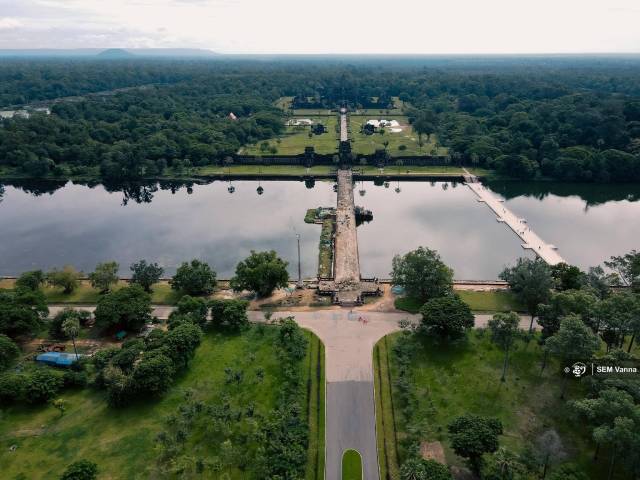Guides Should Show Tourists Siem Reap’s Full Potential, Not Only Temples: Expert

- By Heng Sreylin
- February 5, 2024 3:10 PM
SIEM REAP – Tour guides play an important role in providing information to international tourists of various places in Siem Reap province, said Duch Sareth, the vice president of the Cambodian Tourism Association.
But they should not only point tourists to go visit the temples but also the many other attractions in the region, ranging from visiting museums to touring nearby outdoor sites, he added.
“Almost all guides show visitors just Angkor Wat and other temples in the same area. They neglect other areas that Siem Reap has to offer, such as the Tonle Sap Lake, Kulen mountain, or small traditional villages that allow foreigners to discover Cambodian customs and traditions,” Sareth said.
“We can not show only Angkor Wat. The main problem is do we show all the destinations to tourists? If we don’t promote the rest, tourists won’t know,” he added.
 This photo show Angkor Wat Temple in Siem Reap. Photo: Sem Vanna
This photo show Angkor Wat Temple in Siem Reap. Photo: Sem Vanna
Sareth recalled that in addition to the history of the temples, the province is home to several indigenous communities, such as the Samre, who live in Preah Dak village.
The Samre people know a lot about the construction of religious temples and were used to participating in their protection and preservation in the past.
Local customs and traditions, such as offerings and religious observances, are maintained by people in each area, preserving their identity through dialects and tones that are yet another potential discovery for tourists, Sareth said.
_1707121266.jpg)
Architecture is also another potential attraction for sightseeing. Ancient roofs with sharp peaks, either on top of houses or on pagodas, could be further studied and labeled by conservationists to turn them into a heritage that tourists can learn from.
Moreover, many dishes in Siem Reap can satisfy the hearts and taste buds of visitors, especially Amok, which is a dish that represents the Khmer nation.
“The fish used to make the Amok is fished in the Tonle Sap Lake. It is delicious to eat and attracts foreign tourists who have tasted it,” Duch Sareth said.
The lake is an attraction itself, thanks to its geographic features. It is probably the only lake in the world whose size and depth vary depending on whether the Mekong River flows in or out of it: During the rainy season, the Tonle Sap River flows upwards, filling the lake with tons of fresh water for the fish to grow.
_1707121277.jpg)
In addition to Amok with fish from the Tonle Sap, KorKo soup is a popular local dish that tourists should not miss. The Siem Reap version of the soup includes coconut paste juice in it for unctuosity and taste.
With these few examples, Sareth encouraged all people who work in the tourism sector to better identify tourism potentials across the province.
Sareth also believes that those who reach such off-the-beaten-tracks destinations will have a better and more realistic overview of the country.
Originally written in Khmer for ThmeyThmey, this article was translated by Nhor Sokhoeurn for Cambodianess.















